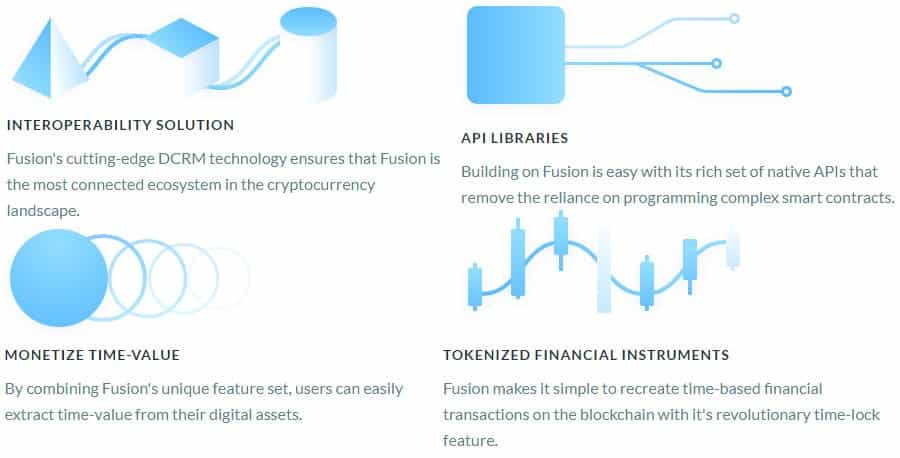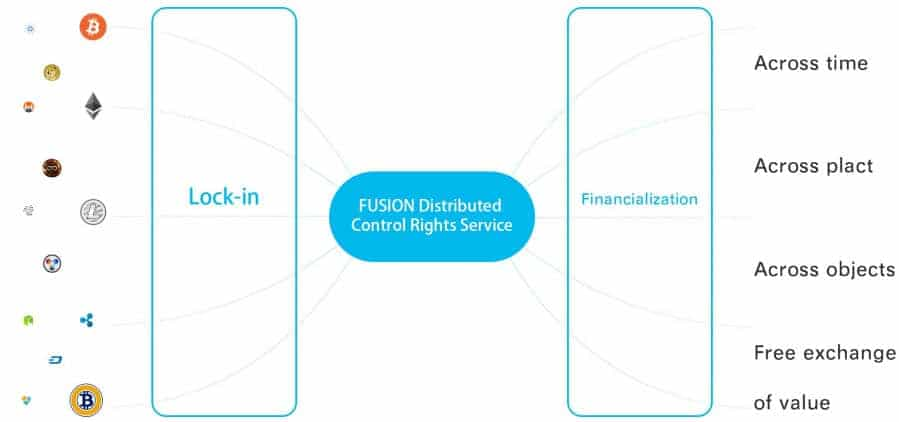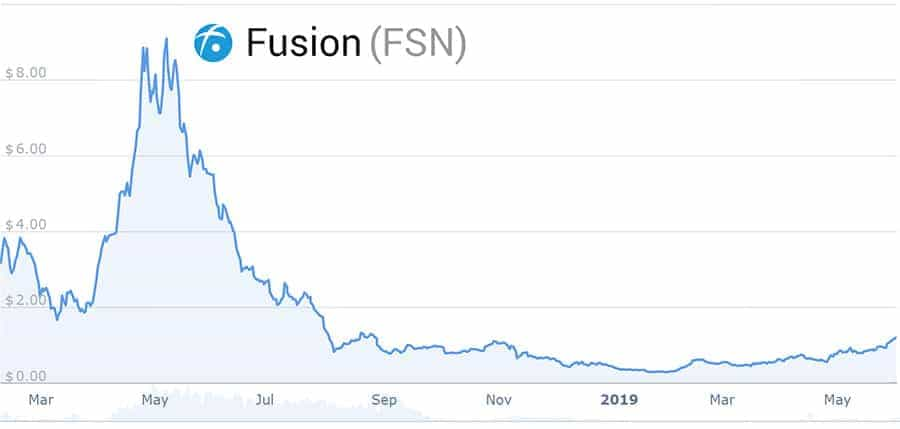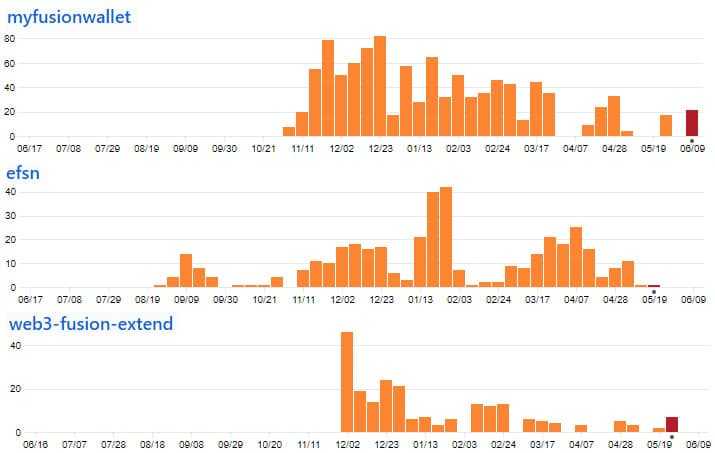Fusion Review: Interoperability Solution for Financial Applications
Fusion (FSN) is an interesting project that is trying to solve the problem of interoperability across blockchains and other networks.
More specifically, the Fusion protocol allows developers to build their own applications which can freely interact with other protocols and technical systems. They claim to be able to make blockchain development easy with their Finance focused APIs.
However, can Fusion really distinguish themselves from the numerous other projects?
In this Fusion review, I will attempt to answer that by taking an in-depth look at the project. I will also analyse the long term adoption potential of the FSN tokens.
What is Fusion?
Fusion is a blockchain project looking to create the next generation of financial innovation. It seeks to connect all financial transactions in an ecosystem that is cross-chain as well as being cross data-source and cross-organization, and it’s doing this through the use of smart contracts.
The project was started by Dejun Qian, who is the CEO of BitSE, which is a start-up incubator that also produced the VeChain and QTUM blockchain projects.

Like many other blockchain projects, one of the main goals of Fusion is to solve the problems of scalability and interoperability that exists in blockchain technology. By accomplishing these goals Fusion will be able to create an ecosystem where digital tokens of any class can be transferred and exchanged on different chains.
Fusion uses a unique consensus method known as Hierarchical Hybrid Consensus Mechanism (HHCM), which combines aspects of both Proof of Work and Proof of Stake. It also takes advantage of parallel computing through the mechanism of grouping its nodes, which creates a platform that is safe and more efficient.
Fusion’s Technological Features
The development of Fusion depends on a number of technologies which are being combined to realize the vision of a connected ecosystem for financial transactions. These technological developments are as follows:
- Crypto Financial Smart Contract (CSC): These are smart contracts used to transact between different cryptocurrencies mapped on the Fusion blockchain.
- The Distributed Control Rights Management (DCRM): This is a security layer for the Fusion blockchain which protects any assets that have been locked in smart contracts. It makes use of sharding and distributed storage of private keys, ensuring no one individual has access to the entire private key, thus ensuring that no single node is able to gain control of the digital assets on the Fusion blockchain.
- The Internet of Values (IoV): In the Fusion white paper the team introduces the term “Internet of Value”, which refers to the management and exchange of digital assets in a secure manner that avoids the need for intermediaries.
- The Multiple Triggering Mechanism (MTM): Fusion’s smart contracts include not only traditional triggering events but also time and event-based triggering, which the Fusion team refers to as the Multiple Triggering Mechanism. The team has included these three triggering mechanisms to allow the smart contracts to meet all the needs of complex financial transactions.
- The Hierarchical Hybrid Consensus Mechanism (HHCM): This feature was mentioned earlier as the consensus mechanism for Fusion, making use of a combination of Proof of Work and Proof of Stake, as well as parallel computing. These combinations allow Fusion to group nodes and attain consensus in different layers to achieve a balance of security, efficacy, and scale.
Fusion’s Crypto-Financial Functions
The use of the DCRM allows for the interaction of different digital assets on the Fusion blockchain. This means the crypto-financial smart contracts can apply higher-level functions with greater complexity. These include multi-token functions as well as multi-role functions.
The multi-token feature allows the smart contract to use the mapped values of digital assets to simultaneously define the relationship between various digital assets that have been locked into a smart contract.

The multi-role feature allows a smart contract to support several different account types while defining interactions between various smart contracts and users simultaneously.
Separation of usufructs allows the proprietorship and usufruct of digital assets to be separated. In traditional smart contracts, tokens have to be transferred wholly, with usufruct and ownership indelibly connected. But the Fusion platform allows these to be separated, which means financial transactions can be made independent of the defining of account ownership.
This is possible because with Fusion’s crypto-financial smart contracts more than two contractual accounts or user accounts can easily be defined within one smart contract.
Fusion Use Cases
In general terms Fusion smart contracts serve as a trust system in financial contracts. Like traditional contract,s a smart contract can be uniquely tailored to a given situation, but with a smart contract once it is settled there is no way to modify or change the content or outcome.
By meshing the architecture of Fusion with its ability to express ownership over time, there’s now an easy and safe way to monetize the time value of an asset. This creates a new set of value exchange, and the Fusion team has identified multiple unique use cases for their blockchain.
- License a Song – Fusion makes it possible to digitize a song, create a set supply of time-locked tokens and sell them. The time lock determines how long the buyer will be able to listen to the song.
- Create an Asset-Backed Bond – You can digitize any asset and use it as collateral for a bond offering, reaching a global pool of investors, even for local assets.
- Rent your House (or an apartment) – You can use Fusion to create a smart locks and control exactly how long the keys will work on the locks through Fusion’s time-locked tokens.
- Get a Cash Advance – If you have future revenues from some income stream you can sell some of these future revenues now and get cash today.
The Fusion Team
The Fusion Project was founded by Dejun Qian, the CEO of BitSE, an incubator company that is also responsible for the creation of VeChain and QTUM, two other successful blockchain projects.
With offices in Singapore, Shanghai and New York it is truly a global operation. The Fusion website lists 15 team members, all having expertise in a variety of technological, business and finance fields. There are an additional 5 advisors to the project, all of whom are influential blockchain pioneers.

As mentioned above, the CEO and founder of Fusion is Dejun Qian, who was a branch manager at IBM before creating BitSE. He has a Bachelor degree in computer science from Fudan University.
Bret Schlussman is the Chief Technology Officer and Chief Blockchain Architect. He was previously CTO and a co-founder of mibi Inc. and is an advisory board member for CUNY Institute for Software Design.
Fusion Community
When it comes to the adoption of a cryptocurrency it helps to have a large and engaged community. They can help spread awareness of the project and hence interest in participation.
Fusion appears to have a rather limited following when compared to some of the other projects with a similar age. For example, they have Twitter account that has just under 10,000 followers. This is however quite active and keeps the community updated.
They also have Telegram channel with about 7,700 followers. I jumped into the group to get a better sense of the discussion. The admins were generally helpful although there was a rather limited amount of engagement among members.
Finally, they also have a Reddit, Facebook and an official blog where they keep the community up to date with the latest on their roadmap, partnerships and other key information.
The FSN Token
The FSN token is an ERC-20 token on the Ethereum blockchain and is used to pay network fees on the Fusion platform. They are also used to execute smart contracts.
The Fusion team held an ICO in February 2018, raising $42,200,000 by selling 20,480,000 FSN tokens at $2.06 each. That represents just 25% of the total coin supply of 81,920,000 total tokens.
The token rose slightly after the ICO, but then pulled back in April 2018. It had one last surge in May 2018, reaching an all-time high of $12.60 on May 5, 2018. From there the price went into a steady decline, heading below the $1 level off and on throughout August and September of 2018, and by October settling under $1.

Finally, the token hit a bottom of $0.278541 on February 8, 2019. It began climbing off that bottom as the broader cryptocurrency markets came out of the long bear market of 2018. As of June 10, 2019, the FSN token is trading at $1.26, which is still 40% off its ICO price, but it has been recovering quickly as the crypto-markets have seen good performance in 2019.
If you feel like that recovery is going to continue and you want to invest in FSN there are several exchanges where you can pick it up. These include BitMax, HotBit, and Bittrex. It is also available from IDEX and Bibox. There are a few other exchanges that offer FSN, but trade volumes are too small to make them worth using.
Generally, there does appear to be relatively healthy levels of volume for the FSN token. This bodes well for the liquidity of FSN which could smooth trading. However, over 60% of this volume is being traded on BitMax which does mean that the exchange has outsized influence for the market.
Because FSN is an ERC-20 token it can be stored in any ERC-20 compatible wallet. You are perhaps best suited to store them on a hardware wallet such as a Ledger Nano or a Trezor.
Fusion Development
Sometimes it can he hard to tell exactly how much work is being done on a project. However, one of the best "rules of thumb" is to take a look at the number of public code commits that they have been pushing.
Hence, I decided to jump into Fusion's GitHub to get a rough idea of what the developers were working on. Below is the commit history for the top 3 repos in their GitHub.

As you can see, they are quite active pushing code in these repos. This is more activity than we see for other projects that are at similar places in their roadmap. It is also worth pointing out that there are a further 11 repositories with varying levels of commits.
This level of coding activity makes sense when you see the technology that the team is working on. For example, they have recently launched their Fusion Asset Gateway which is an important step towards making Fusion’s platform an interconnected ecosystem of economies.
They are also moving forward on the development of DCRM, their interoperability solution. Of course, the main focus of the team right now is on the launch of their mainnet.
Conclusion
While the depressed price of the FSN token is somewhat disconcerting, it is recovering quickly and it is far from the only cryptocurrency that has seen its price significantly depressed in the bear market of 2018.
The team behind Fusion has a solid track record of producing successful Foundations as evidenced by their previous efforts with QTUM and VeChain.
With its focus on facilitating the transfer of disparate digital assets, and improving scalability and interoperability, the demand for the service provided by Fusion is huge.
While nothing is certain, the demand for the services being created by Fusion should give it a long life, and should also see the value of its tokens increase steadily over time.
Disclaimer: These are the writer’s opinions and should not be considered investment advice. Readers should do their own research.
